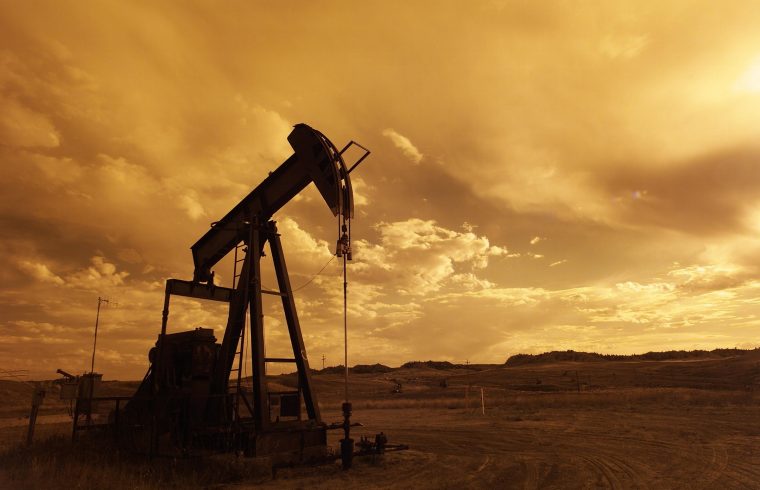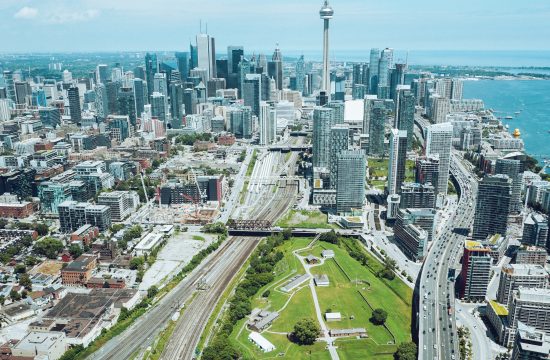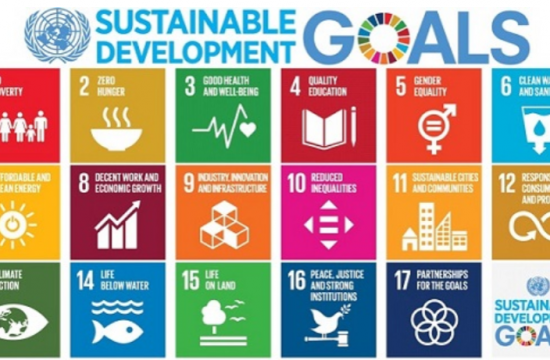India’s Energy Security in Shifting World Order
By Pooran Chandra Pandey
Indian Prime Minister, Narendra Modi, is currently on a three-day tour to Europe and has the Ukraine war and impending energy security issues on his agenda. During his visit, Modi will chair the 6th round of Indo-German Inter-governmental consultation in Berlin with the German chancellor as a co-hair to discuss bilateral, regional, and global issues arising in wake of Russia’s war on Ukraine besides holding meetings with the Nordic Forum in Copenhagen. While on his way back home, he will arrive in Paris to meet with the French President to exchange perspectives on the ongoing war in Ukraine, reiterate India’s position, and discuss energy security issues including free trade agreements that have mutually enforcing incentives embedded bilaterally to plan out future pathways of democratic values and visions and build in process ‘a principles-based robust coalition of willing democracies’ to repel aggressive behavior of autocratic and authoritarian regimes in the world. India is set to play a pivotal role in the current crisis as the country assumes the presidency of G-20 next year and the ground for decisive dialogue and diplomacy is being laid with the Indian Prime Minister’s visit to major European capitals besides meeting with the US president in Japan in next month to discuss QUAD priorities with China firmly on agenda. India is also expected to attend the upcoming G-7 meeting in June in Bavaria.
Russia’s War on Ukraine
Amid Russia’s ongoing war in Ukraine, a flurry of dialogues and diplomatic activities have been doing the rounds with state visits undertaken by heads of state back and forth to amplify, articulate, and enunciate their positions on bilateral relations with Russia, position Ukraine and wider collaborations and partnerships with Europe and EU as a block overvalues and visions for emerging world order. At the heart of it, all lie the energy security, food crisis, inflationary pressures, and reset in global energy security including emergent security architecture, potentially pivoted around energy flow from Russia and efforts of Europe to wean off its long-standing dependence on Russian energy and Moscow’s efforts to diversify its energy supplies more towards south Asia and southeast Asia.
As a result of the ongoing Russia’s war on Ukraine, India’s long-standing bilateral relations with Moscow has been under pressure from all quarters including Germany and France in particular and the EU in general. US as India’s relatively new partner and Japan as the country’s long-standing partner (also being QUAD partners) have also been ramping their efforts to impress upon New Delhi to move away from its dependence on Moscow in view of its unprovoked war against a sovereign and independent Ukraine, a value that democracies hold dear.
India has however made its position clear at multiple forums that it calls for an immediate cessation of Russia’s war on Ukraine and dialogue and diplomacy should prevail in finding a solution to the crisis. New Delhi has though abstained away from security council resolutions against openly criticizing Moscow for its act of war and stated that security council resolutions are a strong indication of the will of the international community which as not being binding and vetoed by Russia as a P5 member would have little ice to cut in being effective to the point of stopping the war.
India has also been suffering due to oil and gas supplies and prices hitting the sky due to a sharp price hike in the international market continuing to benefit from highly discounted oil and gas prices supplied to it by Moscow without being in violation of sanctions imposed by Europe led by the USA. It is also worth mentioning that rising oil and gas prices have likely the potential to upset the domestic politics of countries potentially serving as a template for anti-incumbency factors for those political parties that are in power. Therefore, Russia’s war on Ukraine will likely play out in a number of areas and issues and pivoted by the energy dependence of Europe on Russian oil and gas including in South Asia and Southeast Asia, the emerging world order is widely believed to be reshaping up and would likely redraw geopolitical boundaries much beyond regions with the immediate impact of Russia’s war on Ukraine.
Consider India’s Oil and Gas Industry
The oil and gas industry in India dates back to 1889 when the first oil deposits in the country were discovered near the town of Digboi in the state of Assam. The natural gas industry in India began in the 1960s with the discovery of gas fields in Assam and Maharashtra (Bombay high). As on 31 March 2018, India had estimated crude oil reserves of 594.49 million tonnes (MT) and natural gas reserves of 1339.57 billion cubic meters (BCM).
India imports 82% of its oil needs and aims to bring that down to 67% by 2022 by replacing it with local exploration, renewable energy, and indigenous ethanol fuel. India was the second top net crude oil (including crude oil products) importer of 205.3 Mt in 2019.
Natural Gas Landscape in India
By March 2021, India’s domestic crude oil production output fell by 5.2% and natural gas production by 8.1% in the FY2021 as producers extracted 30,491.7 Thousand Metric Tonnes (TMT) of crude oil and 28670.6 Million Metric Standard Cubic Metres (MMSCM) of natural gas in the fiscal. In August 2021, crude oil production decreased by 2.3%, but there was a 20.23% increase in home-grown natural gas production.
India held 43 trillion cubic feet (Tcf) of proven gas reserves as of 2017, ranking 22nd in the world, accounting for over 1 % of the world’s total natural gas reserves of 6,903 (Tcf). The country thus has proven reserves equivalent to 22.1 times its annual consumption, meaning that India has about 22 years of gas left at current consumption levels, excluding unproven reserves.
In summary, the following are the highlights:
- India consumed 1,957,546 million cubic feet (MMcf) of natural gas per year as of the year 2017-18.
- India now ranks 14th in the world for natural gas consumption, accounting for about 1.5% of the world’s total consumption of 132,290,211 MMcf.
- India consumed 1,462 cubic feet of natural gas per capita every year (based on the 2017-18 population of 1,338,676,785 people), or 4 cubic feet per capita per day.
Summary table:
___________________________________________________________________________
Variability Million Cubic Ft (MMcf)
___________________________________________________________________________
Gas Reserves 50,398,000
Gas Production 1,113,364
Gas Consumption 1,753,143
Yearly Deficit -619,778
Yearly Imports 659,331
Yearly Exports 9,535
Net Imports 649,796
_____________________________________________________________________________
(Data shown in the summary table above is 2016-17, the latest year with complete data in all categories)
Context of natural gas in India’s industrial development
The commercial sector contributes to India’s growth, development, and industrialization use in a variety of sectors and industrial activities ranging from heating buildings and water to operating refrigeration and cooling equipment, to cooking, drying clothes, and providing outdoor lighting. Some consumers in the commercial sector also use natural gas as a fuel in combined heat and power systems. Natural gas thus from a usage point of view in India can be categorized as the most important source of energy source in sectors such as fertilizer, power, refinery, petrochemicals, residential, energy, and transport sectors, accounting for more than 80 % of the total consumption, contributing approximately 30 % in country’s gross national product employing around 20 % of the total workforce in the country.
A summary table below demonstrates the distribution of natural gas consumption in 2021 by sectors:
____________________________________________________________________________
Sectors Distribution of natural gas consumption (In percentage)
____________________________________________________________________________
Fertilizer Industry 29
Power 18
Local Natural Gas Distribution Network 15
Including Road Transport
Refinery 13
Miscl. 08
Petrochemical 05
Internal Consumption for Pipeline System 01
LPG Shrinkage 01
Industrial and Manufacturing 01
Sponge Iron 01
__________________________________________________________
Source: Statista, 2021 (https://www.statista.com/statistics/1126695/india-natural-gas-consumption-share-by-sector/)
Natural gas and Carbon Emissions
The rise in temperature is a cause of major concern across the globe. Some studies have attempted to project the corresponding carbon dioxide emissions and temperature variation in India using the Auto-Regressive Integrated Moving Average Model on the past 44 years’ data for predicting the future demand for petroleum oil, coal, and natural gas in India, anticipating the total demand for petroleum products to double by the year 2020 growing at a rate of 3.5 percent per year. The consumption of coal has witnessed an annual growth rate of 2.6 percent and the growth of natural gas is likely to be the highest among all at 5.1 percent. In total, fossil fuel consumption seems to grow at 4 percent per annum. This may have caused the CO₂ level to rise to one and half times by the year 2020 in comparison to that of the 2008 level thus causing an increase in the surface temperature by 0.0008 percent per annum. However, the level of carbon dioxide emission and the increase in temperature can be controlled by replacing the petroleum oil and coal consumption with natural gas as a transition fuel in a bid for the country to be able to cut its emissions by 50 % by 2030 before going net-zero by 2070 as per country’s renewed climate pledge made at the COP 26 in Glasgow.
India’s Hydrocarbon Vision, 2025
India retained its spot as the third-largest consumer of oil in the world as of 2021. The Government has adopted several policies to fulfill the increasing demand. It has allowed 100% Foreign Direct Investment (FDI) in many segments of the sector, including natural gas, petroleum products, and refineries, among others. Natural gas in India is emerging as the preferred fuel of the future in view of it being an environmentally friendly economically attractive fuel and also a desirable feedstock. An increased focus needs to be given to this potential sector. (India’s Hydrocarbon Vision 2025, Ministry of Petroleum, Government of India), also available at http://petroleum.nic.in/sites/default/files/vision.pdf).
New Delhi’s Climate Pledges and Choices
As India continues to grow economically with a major thrust on the country’s accelerated industrial activities, it finds natural gas a long-term solution while it pushes for cutting down on coal usage from supply chains and going all out for renewables. The country has progressive policies on the use and deployment of natural gas in a bid to cut both emissions and also fulfill its renewed climate pledge announced at COP 26 in Glasgow. India has realized that the country will have to find its own foothold in its push for clean energy and cutting emissions and going net neutral as the developed nations have failed poorly in honoring their binding commitment to support developing economies such as India and those in the global South both with USD 100 billion financial support and transfer of clean technologies promised as a part of Paris Climate Agreement, 2015.
Natural gas in India is poised to act as a substitute for coal in the short to medium term and likely be leveraged as a transition fuel in the long term before fully aligning with clean energy elements through renewable sources and innovative energy mixing, going forward.
What’s in the making?
It is in this context that New Delhi is currently reviewing its energy security issues, figuring out a new pathway on a pragmatic need to balance its collaborations with liberal democracies with its long-standing bilateral relations with Moscow, a tight rope walk that India will have to tread arising out of Russia’s ongoing war on Ukraine. India’s dependence though on Russian energy is minuscule in comparison to its EU partners, however, given that Europe in the medium-term has committed to weaning off its dependence on Russian energy sources – on gas, in particular, Moscow has, in turn, made it clear that it would diversify its energy supplies out of Europe into south Asia and south-east Asia at enormously subsidized rates. India, upon being offered alternative energy sources by the Western partners, has made it clear that other energy alternatives are too expensive. It would indeed be worth a wait to watch out for how energy prices would likely influence shifting geopolitics and geo-economics within and beyond regions.
One thing though, going forward, that seems certain is that energy issues would likely pivot the changing world order and reset the security architecture largely triggered by cheap energy supplies to new emergent markets, potentially in lead up to new power realignments between the East and the West in the aftermath of Russia’s war on Ukraine.








